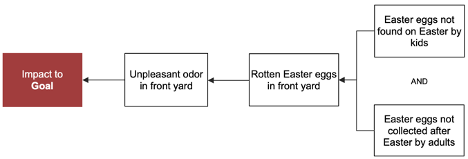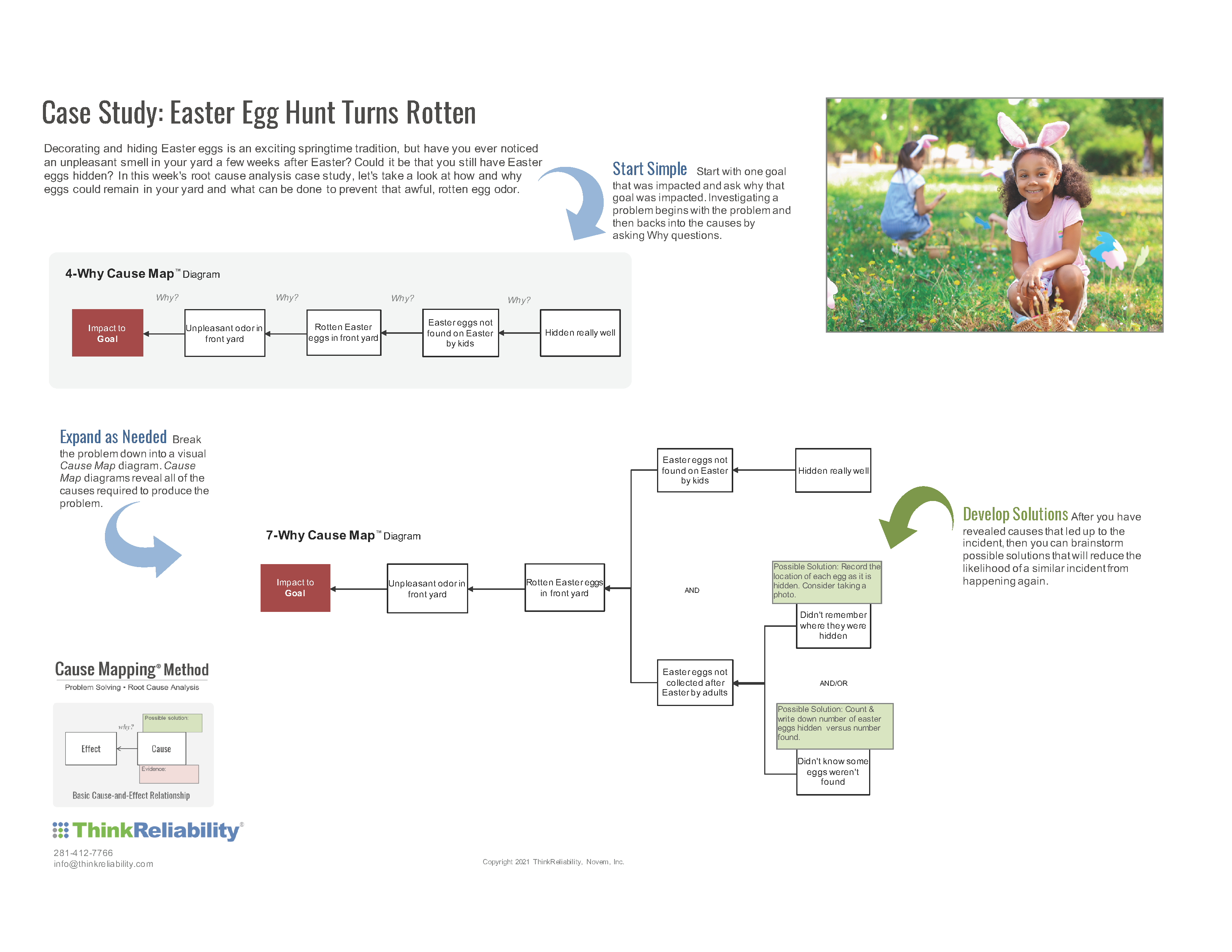Have you ever noticed an unpleasant smell in your yard a few weeks after Easter? Could it be that you still have Easter eggs hidden? In this week's root cause analysis case study, let's take a look at how and why eggs could remain in your yard and what can be done to prevent that awful rotten egg odor.
Decorating and hiding Easter eggs is an exciting springtime tradition. For those of you unfamiliar with the tradition, at Easter time, many families will boil eggs, decorate them and then hide them outside for kids to find. If you are old-fashioned like me and some of my friends, we hard boil and decorate eggs ourselves. Then, we hide them for the neighborhood kids to come find. But, the springtime fun can get stinky if you don’t find all of them.
To avoid missing eggs, we can build a Cause Map™ diagram, a visual cause-and-effect analysis, to determine the potential causes. We can also develop possible solutions to mitigate those causes. Let’s start with an undesired impact of a smelly yard. A 1-Why diagram could look like this.

We can continue asking Why questions to better understand the details of the incident. When we ask, “Why is there an unpleasant odor in the front yard?”, we get the answer, “Because there are rotten Easter eggs in the front yard.” The 1-Why expands into a 2-Why Cause Map diagram.

When we ask another Why question, our Map can expand into a 4-Why with two different answers. The children looking for Easter eggs didn’t find the eggs AND the adults didn’t collect all of the eggs after Easter was over. Both had to occur for eggs to be left in the yard because there were two different ways that the eggs could have been removed from the yard.

From here, we can continue to ask Why questions. The Easter eggs were not found by the kids because they were hidden well, but why didn’t the adults collect the rest of the Easter eggs, so there wouldn’t be any unintended consequences like a smelly yard or attracting wildlife?
This is where we can ask about breakdowns in the work process. The adults may not have remembered where all the eggs were hidden, and they may not have known all the eggs weren’t found. I am guessing most adults don’t make a detailed inventory of what each egg looks like, where it is hidden, and then if it is found. It’s probably not necessary, and the level of effort of such a task may not outweigh the potential risk. However, if you want your Easter egg hunt to be a success by guaranteeing that all eggs are found, then this may be a viable solution for you. Click on the thumbnail below to see what a 7-Why Cause Map diagram could look like with possible solutions.
Of course, the Cause Mapping® method is not limited to investigating the causes of a smelly yard. It can be used to investigate incidents of any size or magnitude—from small incidents like a forgotten Easter egg to catastrophic incidents like a refinery explosion. For more information about the Cause Mapping method and how it can apply to problems in your organization, check out one of our upcoming free webinars or another training opportunity.











